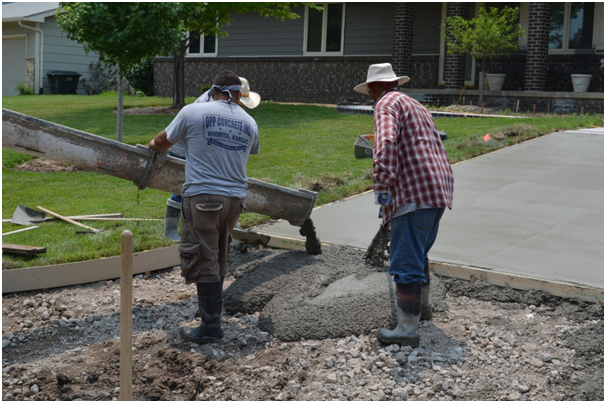You might think that there’s not much to laying concrete, but it’s not as straightforward as it looks. There is a lot of preparation needed before one drop of concrete is poured. When you think of the whole process, it includes: mix design, quantity decisions, site prep, acquiring tools, checking weather forecasts, placement and curing. Here are some of the most common mistakes people make when pouring concrete:
- Misjudging the amount needed
One big mistake is underestimating how thick the concrete needs to be for the project. This only doesn’t matter if the concrete is for decoration or display only or will be non-load bearing. For everything else, dimensions are vital, such as for flooring, driveways, foundations and supports. The thickness needed depends on the weight it needs to support. Concrete that’s too thin for its purpose will crack. Concrete dries quickly, leaving little time for mistakes or changes so always order more than you think you need. Don’t rely on exact measurements or try to be economical.
- Believing that all concrete is the same
There is more to concrete than you would first imagine and what it’s going to be used for will affect its mix design. As well as having three basic types, there are also admixtures which give concrete different features, extra strength and wider application ranges. What elements are in the concrete affect its curing time too.
- Not having the right tools
Once concrete is poured, there is a small window of opportunity in which it can be worked on before drying. Not having the correct tools to hand can ruin a project, leading to poor quality laying, wasting money and wasted effort. There is no time for dashing to the DIY store or testing new tools you’re not familiar with, so preparation is key. Common tools that are required include industrial wheelbarrows, concrete trowels, bull float, darby, screed board and rake. Why not leave it to the professionals? For Concrete Pumping Gloucestershire, visit http://www.monstermixconcrete.co.uk/concrete-services.php
- Lack of site preparation
Rushing to pour concrete before the site is fully ready is another common error. Your site needs to be level, compacted and dry. A spot might require top soil and root removal before laying a thick layer of gravel over the top to help compact the ground. Gravel is used to prevent the concrete from shifting and also helps with the draining of water. A drainage channel is a useful addition to prevent any water under the concrete from causing the ground to swell and cracking the concrete.
- Pouring concrete in the wrong weather conditions
The optimum time for pouring concrete is a warm and dry day. It’s not always easy waiting for one of these in the UK! This is important because the temperature of the concrete during the first two days determines whether it will reach its full-strength potential or not. If it freezes, this weakens it greatly. Too hot and the water evaporates too quickly. Curing the concrete means it should remain wet for a few days, so if it’s going to hot you might want to place sprinklers on it.











